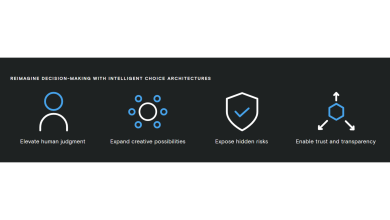
When Efficiency Becomes a Distraction
Most companies measure AI success like they measure printer ink, by how much money they save. That’s a start, but it’s like judging the internet by how many stamps it replaced.
The first wave of generative AI adoption was about cutting costs. Automate this, summarize that, trim a few hours here and there. Useful, sure. But cost savings aren’t a strategy. They’re a side effect.
The real return on AI shows up when you stop counting minutes and start creating new value. Efficiency gets you through the door. Transformation keeps you in the game.
Why the ROI Math Keeps Failing
Ask ten companies what ROI they’ve seen from generative AI and you’ll hear ten different answers. That’s because most are measuring it like a machine, not a mindset.
They track “time saved” or “hours reduced,” which sounds logical until you realize it doesn’t tell you what that time was used for. If a team saves ten hours a week and just fills it with more meetings, the ROI is zero.
Leaders are starting to see the trap. AI’s worth isn’t in squeezing more tasks into the calendar. It’s in changing what’s possible in the first place.
The Three Layers of AI ROI
You can think of the return on AI investment in three layers.
- Automation ROI (Save Time).
This is where most teams start. You use AI to automate repetitive work. Reports write themselves. Emails draft faster. Slides build in minutes instead of hours. It’s practical, measurable, and a little boring once you get used to it. - Augmentation ROI (Improve Quality).
Here, AI becomes a collaborator, not a shortcut. Analysts use it to explore new scenarios.Writers use it to find better angles. Engineers use it to test edge cases before they happen. You’re not just doing the same work faster. You’re doing better work. - Transformation ROI (Redefine Value).
This is the leap. AI doesn’t just optimize what exists. It helps you designwhat doesn’t. You invent new products, new experiences, or even new business models. It’s the difference between a team that saves 10 percent on cost and one that creates a new revenue stream entirely.
What Transformation Looks Like
A marketing team uses AI to write ad copy. They save a few hours. Good.
Then they use it to generate and test fifty campaign variants overnight. Suddenly, they find a new audience segment that drives double the conversion rate. That’s not automation. That’s discovery.
A legal team uses AI to summarize case law. They cut research time in half. Great.
Then they start using it to model case outcomes based on precedent patterns. They shift from reactive to predictive. That’s transformation.
A product team uses AI to write release notes. Fine.
Then they use it to simulate how customers will respond to pricing or feature changes before launch. That’s strategic foresight. That’s transformation.
The ROI Shift: From Saving to Shaping
When you focus only on saving, you stay in maintenance mode. The best you can do is run a little faster on the same track.
Transformation ROI comes from reshaping the track entirely. It’s about new capacity, not just new efficiency.
That shift requires a mindset change: stop asking what AI can replace and start asking what it can reveal.
How to Measure What Matters
Traditional ROI metrics fall short because they only capture direct outputs. To measure transformation, you need to track new outcomes. Try these instead:
- Opportunity creation. How many new products, markets, or services did AI help you uncover?
- Decision velocity. How much faster are you learning, not just executing?
- Human amplification. What new skills or insights did your people gain through using AI?
Those metrics tell a richer story. They measure the expanding surface area of what your business can imagine and deliver.
The Real Return
Generative AI is not a cost-saving tool. It’s a capability-expanding one.
Automation gives you time back. Augmentation gives you better output. Transformation gives you a new playing field.
The companies that win this wave won’t be the ones who saved the most hours. They’ll be the ones who asked, “What can we do now that we couldn’t do before?”
That’s the real ROI of AI. Not subtraction, but multiplication. Not savings, but possibility.



